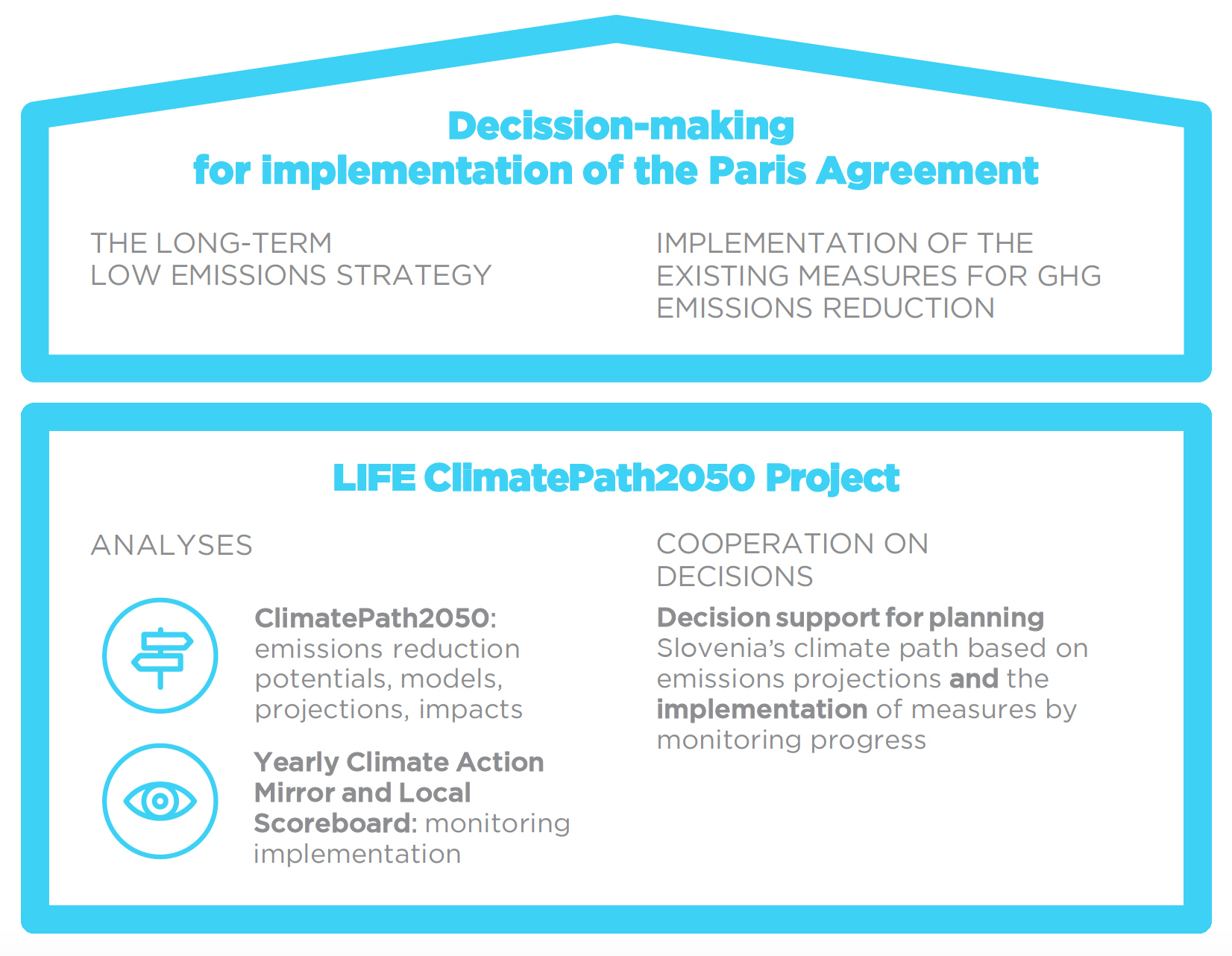The LIFE ClimatePath2050 project supports the implementation of the Paris Agreement in Slovenia.
As a member of the European Union, Slovenia is committed to following the objective of the Paris Agreement of holding the increase in global temperature to well below 2°C by reducing greenhouse gas (GHG) emissions and pursuing efforts to limit the temperature increase to 1.5 °C above the pre-industrial period.
In the project, an enhanced decision support system was set up to improve planning as well as monitoring of the implementation of measures for reducing greenhouse gas emissions in buildings and in the transport, industry, energy supply, agriculture, forestry, and waste sectors.
The project has multiple objectives:
- To prepare long-term scenarios for GHG emissions reductions up to 2050 and assess the impacts of scenarios for strategic planning;
- To upgrade the system for monitoring the implementation of measures and to improve the accessibility and transparency of analyses for better climate governance;
- To facilitate and organize cooperation with decision-makers and stakeholders;
- Through cooperation among decision-makers, to ensure broader, better, and easier use of analysis in policymaking; and
- To transfer selected results to the local level.

As part of the project, analyses and projections of GHG emissions reduction have been prepared and used as the analytical background for the preparation of multiple official documents:
- The Long-term Climate Strategy up to 2050 of Slovenia;
- The Integrated National Energy and Climate Plan of the Republic of Slovenia;
- The Long-term Strategy for the Energy Renovation of Buildings up to 2050.
In preparation, the following is based on the same scientific foundation:
- The National Air Pollution Control Programme.
To achieve climate neutrality, various emissions reduction scenarios have been evaluated, as well as wider economic and other benefits. The key results of the scenario analysis are that:
- Slovenia can set climate neutrality as an objective to be achieved by 2050.
- Multiple scenarios lead to this target.
- Climate neutrality pathways can be designed in such a way that other general and sectoral development criteria, such as supply security, competitiveness, and food security, are respected.
The scientific foundation has also demonstrated which decisions of key importance need to be made in the future in order to achieve the targets, inter alia, selection of the energy mix and transport demand management. Insights about the factors influencing future emissions are also very important for increasing the medium-term ambitions and strengthening targets.
The annual Climate Action Mirror, with three volumes published in 2018, 2019, and 2020, serves as the central national survey of climate activity. A system of continuous improvement has been established with the involvement of stakeholders. The results have also been widely used and quoted by different stakeholders for different purposes, for example: for reporting, the enhancement of measures, and in the reasoning of initiatives and statements.
Local Climate Action Scoreboard is a web application for monitoring the progress of measures for municipalities. A system of indicators ensures comparability among individual municipalities. The application helps municipalities monitor the set climate policies and attain the set objectives. It also serves as a platform for the exchange of ideas and experiences among municipalities that have achieved outstanding results in specific categories.
More than 35 events have been organized in order to involve a wider network of experts, decision-makers, stakeholders, and the interested public in discussions on key issues. During the implementation of the project, all key stakeholders participated in the project actions – including all the institutions responsible for the implementation of climate measures in Slovenia.
